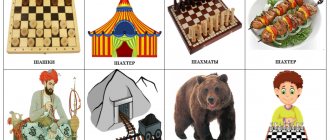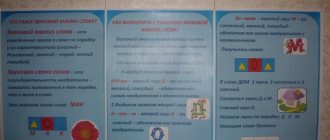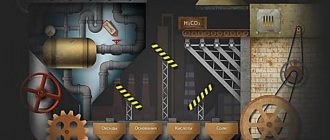Самый сложный текст в жизни
«Если существует победа, то должно быть сражение. Если грядёт сражение, то вероятна война. Если война неизбежна, то необходимо готовиться. Чем лучше готов, тем меньше трусости в отдельном сражении, тем спокойнее за исход. В этом есть толика циничного, очевидного примитивизма. Вообще, это не всегда спасающий закон, но куда чаще решающий. Сложно успешно воевать, оставаясь консерватором, однако это не означает мгновенную смену фундаментальных основ, ведь, как обычно, результат принесут детали. Только эти самые детали – ловушка. Увлёкшись мелким конкурентным преимуществом очень легко упустить те глобальные и простые вещи, которые как бы одинаковы у всех противоборствующих сторон».
Единственная цель командного вида спорта заключается в создании коллектива, который будет собирать симпатии (чьи? – обычно бывает не важно). Смысл в том, чтобы добиться достаточного количества связанных между собой исполнителей, соответствующих неким требованиям, формируемым здоровой спортивной конкуренцией и нашим специфическим вкусом. Другими словами: необходимо связать работу и людей
. При этом важно корректно трактовать связанные процессы, не забывая, что каждое понятие способно иметь более одного определения. Одиннадцать фишек на магнитной доске не имеют абсолютно никакой идеи, если между ними не обозначены связи.
Связь – это результат работы с людьми, характеризующий финальную целостность структуры. Возможно, данную операцию корректно было бы называть «менеджментом», но не в современном мире. Это слишком чумазый процесс для массового осознания: белые манжеты моментально теряют презентабельный вид. В любом случае, этот результат вырисовывается через рутину – самые сложные эмоции, самые концентрированные стрессы. Мгновенный результат не сдвигает тебя с места, только длинный тренд доказывает отсутствие случайности. Девяносто минут матча – слишком короткий промежуток времени, поэтому отвечать за результат игры не способен ни один человек. Но! За принятое решение способен ответить каждый. В этом суть системы, которая будет выживать и регулировать себя даже в кризисные времена.
Работа – это поиск решения задач. Искать в том, на что способен влиять и можешь контролировать – это здраво, хотя может оказаться скучнее скучного и монотоннее монотонного. Но, почувствуйте, «пассивно выигранное очко» – не путь успешных. Лезть туда, куда никто не решился, или задумываться о том, на чем остальные давно поставили крест, точно не сделает тебя слабее. Не все могут быть красивыми, кому-то надо вырасти умным. Конечно, все это находится вне зоны комфорта, однако страх не должен определять будущее. Ну, а чтобы не бояться, нужно просто верить в процесс. Логика проста: без веры нет страсти, а работа без страсти превращается в халтуру. Заметьте, мы либо тратимся на то, во что верим, либо мучительно ожидаем момент, когда возникнет новый повод поверить.
За людей в футболе отвечает селекция. Принципиально, это поиск перспективы, да такой, чтобы после истечения «эффекта новизны» осталось хоть минимальное удовлетворение. Это искреннее желание расти и становиться сильнее. Это смена рынка перед тем, как начнешь на нем проигрывать. Это не камуфляж, скрывающий предыдущую ошибку на фоне нового, ещё более безобразного промаха. Это новая идея, не дающая трещину в принятой философии. Это аргументированная игра на опережение в том, что большинство склонно угадывать. Таким образом, селекция не ограничивается открытым трансферным окном. Если в структуре нет постоянного (текущего) рейтинга исполнителей – смысла в отделе экспертов не существует. Отсюда, скорее всего, приблизиться к цели не получится.
Только впередиидущий станет претендентом на титул «Лучший».
Наверное, одним из самых сложных занятий в любом деле является формулирование цели. По мне, это вообще отдельная фундаментальная наука. Можно прокручивать в голове миллион идей, но так и не превратить их в нечто разумное. Идея – это некая идеальная модель. Модель будущего. Может быть, блаженная мысль, в которую верит лишь автор. При проекции на реальность она часто искажается, и даже теряется. Нести идею сквозь обстоятельства – особый показатель силы. Но мы слабы. Слабы потому, что не вынашиваем идею до трансформации в четкую цель. Сталкиваясь с трудностями, с течением времени, мы скорее перестаём требовать от себя что-то, чем добиваемся задуманного, т.е. теряем концентрацию, а с ней и шансы на успех.
Цель — это шлифованная идея. Игра — это борьба идей. Борьба целей — это конкуренция.
Поиск не имеет никаких ограничений, кроме временных, поэтому продуктивно потраченное время – ключевое конкурентное преимущество во всем на свете. Иногда рабочее время можно обмануть, решив игровой эпизод не тактическим приемом, а стратегически ходом. В частности, можно сделать тест частью тренировочного процесса или структурно подойти к исполнению угловых ударов. Это даст возможность более индивидуально подойти к другим задачам, требующим более прочные связи и шлифовку. Если ложишься спать с часами на руке, то, скорее всего ты где-то рядом с искомым ответом, это дисциплинарно неповторимое чувство.
Если много работать, то велика вероятность, что наступит порядок. Момент, когда все «винтики механизма» начнут получать удовлетворение от процесса. Странное, конечно, сравнение. Винтики, шарики, ролики. Нет, питаться одним позитивом абсолютно нездорово, но факт осознанной ответственности позволит отпускать мысли, подрывающие веру в процесс.
Футбол – это игра, и мы пытаемся ее приручить, разложить, посчитать. Только игра немножко более чем жива, и если для статистики «единица» – погрешность, то для игры – результат. Забудьте про условные две цифры, глядя на который заветный результат будет гарантирован. Это слишком дорогой и сложный спорт, чтобы уместить всю суть в две строчки. Необходим анализ, заключенный где-то между дедукцией и индукцией. Метаться внутри этого отрезка, искренне надеясь, что знаешь, чего хочешь, поможет родить нечто достойное. Ведь только тогда получится находить и не забывать аргументы для споров, превращая бордель в подсознании в нечто системное и оригинальное.
Уровень A1 (Beginner)
Это базовый или начальный уровень изучения английского. Здесь самая простая грамматика и лексика, темы рассказов описывают простейшие бытовые ситуации и дают основную информацию о человеке.
My day
First, I wake up. Then, I get dressed. I walk to school. I do not ride a bike. I do not ride the bus. I like to go to school. It rains. I do not like rain. I eat lunch. I eat a sandwich and an apple.
I play outside. I like to play. I read a book. I like to read books. I walk home. I do not like walking home. My mother cooks soup for dinner. The soup is hot. Then, I go to bed. I do not like to go to bed.
Our Vacation
Every year we go to Florida. We like to go to the beach. My favorite beach is called Emerson Beach. It is very long, with soft sand and palm trees. It is very beautiful. I like to make sandcastles and watch the sailboats go by. Sometimes there are dolphins and whales in the water!
Every morning we look for shells in the sand. I found fifteen big shells last year. I put them in a special place in my room. This year I want to learn to surf. It is hard to surf, but so much fun! My sister is a good surfer. She says that she can teach me. I hope I can do it!
My name is John
Hi! Nice to meet you! My name is John Smith. I am 19 and a student in college. I go to college in New York. My favorite courses are Geometry, French, and History. English is my hardest course. My professors are very friendly and smart. It’s my second year in college now. I love it!
I live in a big house on Ivy Street. It’s near the college campus. I share the house with three other students. Their names are Bill, Tony, and Paul. We help each other with homework. On the weekend, we play football together.
I have a younger brother. He just started high school. He is 14 and lives with my parents. They live on Mulberry Street in Boston. Sometimes they visit me in New York. I am happy when they visit. My Mom always brings me sweets and candy when they come. I really miss them, too!
Уровень C1 (Advanced)
Свободное общение на английском практически в любой ситуации, от бытовой до учебы в университете и работы в полностью английской среде с носителями языка.
Sustainable supermarkets
Many of the major supermarket chains have come under fire with accusations of various unethical acts over the past decade. They’ve wasted tonnes of food, they’ve underpaid their suppliers and they’ve contributed to excessive plastic waste in their packaging, which has had its impact on our environment.
But supermarkets and grocers are starting to sit up and take notice. In response to growing consumer backlash against the huge amounts of plastic waste generated by plastic packaging, some of the largest UK supermarkets have signed up to a pact promising to transform packaging and cut plastic wastage. In a pledge to reuse, recycle or compost all plastic wastage by 2025, supermarkets are now beginning to take some responsibility for the part they play in contributing to the damage to our environment, with one major supermarket announcing their plan to eliminate all plastic packaging in their own-brand products by 2023.
In response to criticisms over food waste, some supermarkets are donating some of their food surplus. However, charities estimate that they are only accessing two per cent of supermarkets’ total food surplus, so this hardly seems to be solving the problem. Some say that supermarkets are simply not doing enough. Most supermarkets operate under a veil of secrecy when asked for exact figures of food wastage, and without more transparency it is hard to come up with a systematic approach to avoiding waste and to redistributing surplus food.
Some smaller companies are now taking matters into their own hands and offering consumers a greener, more environmentally friendly option. Shops like Berlin’s Original Unverpakt and London’s Bulk Market are plastic-free shops that have opened in recent years, encouraging customers to use their own containers or compostable bags. Online grocer Farmdrop eliminates the need for large warehouses and the risk of huge food surplus by delivering fresh produce from local farmers to its customers on a daily basis via electric cars, offering farmers the lion’s share of the retail price.
There is no doubt that we still have a long way to go in reducing food waste and plastic waste. But perhaps the major supermarkets might take inspiration from these smaller grocers and gradually move towards a more sustainable future for us all.
A threat to bananas
In the 1950s, Central American commercial banana growers were facing the death of their most lucrative product, the Gros Michel banana, known as Big Mike. And now it’s happening again to Big Mike’s successor – the Cavendish.
With its easily transported, thick-skinned and sweet-tasting fruit, the Gros Michel banana plant dominated the plantations of Central America. United Fruit, the main grower and exporter in South America at the time, mass-produced its bananas in the most efficient way possible: it cloned shoots from the stems of plants instead of growing plants from seeds, and cultivated them in densely packed fields.
Unfortunately, these conditions are also perfect for the spread of the fungus Fusarium oxysporum f. sp. cubense, which attacks the plant’s roots and prevents it from transporting water to the stem and leaves. The TR-1 strain of the fungus was resistant to crop sprays and travelled around on boots or the tyres of trucks, slowly infecting plantations across the region. In an attempt to escape the fungus, farmers abandoned infected fields, flooded them and then replanted crops somewhere else, often cutting down rainforest to do so.
Their efforts failed. So, instead, they searched for a variety of banana that the fungus didn’t affect. They found the Cavendish, as it was called, in the greenhouse of a British duke. It wasn’t as well suited to shipping as the Gros Michel, but its bananas tasted good enough to keep consumers happy. Most importantly, TR-1 didn’t seem to affect it. In a few years, United Fruit had saved itself from bankruptcy by filling its plantations with thousands of the new plants, copying the same monoculture growing conditions Gros Michel had thrived in.
While the operation was a huge success for the Latin American industry, the Cavendish banana itself is far from safe. In 2014, South East Asia, another major banana producer, exported four million tons of Cavendish bananas. But, in 2015, its exports had dropped by 46 per cent thanks to a combination of another strain of the fungus, TR-4, and bad weather.
Growing practices in South East Asia haven’t helped matters. Growers can’t always afford the expensive lab-based methods to clone plants from shoots without spreading the disease. Also, they often aren’t strict enough about cleaning farm equipment and quarantining infected fields. As a result, the fungus has spread to Australia, the Middle East and Mozambique – and Latin America, heavily dependent on its monoculture Cavendish crops, could easily be next.
Racing against the inevitable, scientists are working on solving the problem by genetically modifying the Cavendish with genes from TR-4-resistant banana species. Researchers at the Queensland University of Technology have successfully grown two kinds of modified plant which have remained resistant for three years so far. But some experts think this is just a sophisticated version of the same temporary solution the original Cavendish provided. If the new bananas are planted in the same monocultures as the Cavendish and the Gros Michel before it, the risk is that another strain of the disease may rise up to threaten the modified plants too.
Уровень A2 (Elementary)
Чуть более сложная грамматика и более разнообразная лексика. Больше времен, предложения становятся сложнее, а темы разнообразнее и детальнее.
At school
Lucas goes to school every day of the week. He has many subjects to go to each school day: English, art, science, mathematics, gym, and history. His mother packs a big backpack full of books and lunch for Lucas.
His first class is English, and he likes that teacher very much. His English teacher says that he is a good pupil, which Lucas knows means that she thinks he is a good student.
His next class is art. He draws on paper with crayons and pencils and sometimes uses a ruler. Lucas likes art. It is his favorite class.
His third class is science. This class is very hard for Lucas to figure out, but he gets to work with his classmates a lot, which he likes to do. His friend, Kyle, works with Lucas in science class, and they have fun.
Then Lucas gets his break for lunch. He sits with Kyle while he eats. The principal, or the headmaster as some call him, likes to walk around and talk to students during lunch to check that they are all behaving.
The next class is mathematics, which most of the students just call math. Kyle has trouble getting a good grade in mathematics, but the teacher is very nice and helpful.
His fourth class is gym. It is just exercising.
History is his last class of the day Lucas has a hard time staying awake. Many lessons are boring, and he is very tired after doing gym.
Going to a restaurant
Sandra and Paul are at a steak restaurant. A waiter greets them.
«Do you know what you would like to drink?» the waiter asks. “Water and orange juice,” Sandra says. «Thank you. Here are your menus,» the waiter says.
The waiter brings water for Paul and orange juice for Sandra.
«What would you like to order?» the waiter asks. «I would like a 12-ounce steak and mashed potatoes,» Paul says. «The same thing, but with green beans,» Sandra says. «And two orders of garlic bread,» Paul says. «Great. You should have it in soon,» the waiter says.
The waiter returns after an hour.
“Sorry for your wait. Here are two orders of 12-ounce steaks with mashed potatoes and garlic bread,” the waiter says. «I asked for green beans with mine,» Sandra says. «I’m sorry, I’ll get those for you,» the waiter says.
The waiter quickly returns with Sandra’s green beans.
Letter to a Friend
Hi, Fred!
It’s been a while since we have been in touch. How has your semester been?
I wanted to send you an email update to you let you know how things have been going during my semester abroad here in Málaga, Spain. I’ve already been here for six weeks, and I feel like I am finally adapting to the culture. I’m also speaking the language more fluently.
I arrived during the first week of September. The weather has been very nice. Even though it’s October, it’s still rather sunny and warm. In fact, I went to the beach and swam in the Mediterranean Sea earlier today.
I am living with a very welcoming host family. I have my own private bedroom, but we eat breakfast, lunch, and dinner together. On Sundays, we eat a big home-cooked paella for lunch. In Spain, lunch is usually the biggest meal of the day. It’s also very common for the people to take a midday nap right after a big meal. I am actually just waking up from my nap right now!
On weekdays, I take classes at the local university. There, I met several native Spanish speakers. They have been very kind and patient with me. At first, I struggled to comprehend their Spanish, but now I understand most of our conversations. They have commented that my Spanish has improved a lot since we first met. Now, I am more confident to use the language in other places like stores and restaurants.
I am so glad that I decided to spend the semester here in Spain. We have an extended weekend coming up, so a group of my friends and I are going to travel to France for four days. It’s so easy and inexpensive to travel internationally in Europe. I love it!
I look forward to hearing from you soon. Like I said, don’t hesitate to stay in touch more often. Perhaps you could even come to visit! What do you think?
Best wishes, Patrick
Уровень B1 (Intermediate)
Это так называемый средний или пороговый уровень. Он предполагает способность общаться и воспринимать информацию на английском в большинстве бытовых ситуаций, без помощи словаря или переводчика.
Chicago
Keith recently came back from a trip to Chicago, Illinois. This midwestern metropolis is found along the shore of Lake Michigan. During his visit, Keith spent a lot of time exploring the city to visit important landmarks and monuments.
Keith loves baseball, and he made sure to take a visit to Wrigley Field. Not only did he take a tour of this spectacular stadium, but he also got to watch a Chicago Cubs game. In the stadium, Keith and the other fans cheered for the Cubs. Keith was happy that the Cubs won with a score of 5-4.
Chicago has many historic places to visit. Keith found the Chicago Water Tower impressive as it is one of the few remaining landmarks to have survived the Great Chicago Fire of 1871. Keith also took a walk through Jackson Park, a great outdoor space that hosted the World’s Fair of 1892. The park is great for a leisurely stroll, and it still features some of the original architecture and replicas of monuments that were featured in the World’s Fair.
During the last part of his visit, Keith managed to climb the stairs inside of the Willis Tower, a 110-story skyscraper. Despite the challenge of climbing the many flights of stairs, Keith felt that reaching the top was worth the effort. From the rooftop, Keith received a gorgeous view of the city’s skyline with Lake Michigan in the background.
Going to work in the morning
My job is a long distance from my home, almost 50 miles away. I have to wake up early every morning, as I’m always in a rush. There’s never enough time for a relaxed breakfast. At exactly 6:00 AM, I get into my car and start the long drive.
I usually like driving on the highway more than in the city. During the morning rush hour, though, it’s not very enjoyable. The heavy traffic is a little bit annoying. So I always listen to my favorite classical music CD’s in the car – Chopin, Mozart, and Bach. That cheers me up a lot.
The drive to work takes about one hour. Going back home in the evening after work takes even longer, maybe around 70 minutes. Lately I’ve been thinking about trying to take the train to work instead of driving. That way, I could still listen to my music with headphones, and even read a novel at the same time.
Уровень B2 (Upper-Intermediate)
На этом уровне говорящий уже может рассуждать и читать более абстрактные и специальные тексты, понимать устойчивые выражения, юмор и скрытый смысл.
Boston
Jean and her family recently traveled to Boston, Massachusetts, one of America’s oldest colonial cities. Boston is rich in history and local personality. During their visit, Jean and her family appreciated learning about Boston’s role during the American Revolution.
In the city, Jean and her family followed the famous Freedom Trail. This is a 2.5-mile route that tourists can explore in order to visit 16 different historical landmarks located throughout the city. Famous sites on this trail include the Paul Revere House, King’s Chapel, and the Bunker Hill Memorial. Jean and her family received a map to navigate the Freedom Trail. The roads were clearly marked by red lines, and there were signs throughout the city to keep Jean’s family and other tourists from getting lost.
As part of the Freedom Trail, Jean and her family spent a lot of time in Boston’s North End. This is one of the oldest residential neighborhoods in the entire country. Here, Jean and her family were able to visit Boston Harbor, which is the site of the historical Boston Tea Party. This event sent a strong message to the British leading up to the American Revolution.
The end of the Freedom Trail led Jean and her Family to the Boston Common, the oldest urban park in the nation. The park is filled with plenty of lush greenery, but it also serves as a burial ground for heroes of the American Revolution.
Because of their walk along the historical Freedom Trail, Jean and her family left Boston with a thorough understanding of early American history.
Amazon adventurer
Ed Stafford from the UK is the first person to walk the length of the Amazon River. He started by a small stream in the Andes mountains of Peru and arrived at the river’s mouth in Brazil, two years and four months later, having walked 6,000 kilometres.
The Amazon rainforest is home to poisonous snakes, crocodiles and jaguars, so Ed was in constant danger. Luckily, he survived with nothing worse than a few thousand mosquito and ant bites. On his trip, Ed had to find food to eat every day. A lot of the time, the fruit, nuts and fish he ate were hard to find and he often felt weak and exhausted.
Ed’s walk would have been impossible without technology. He used a radio to ask the people of the rainforest for food and permission to cross their land. Many of them came to meet him and helped guide him through the most difficult terrain. As he walked Ed wrote a blog, recording his day-to-day experiences. He used the media interest in his trip to protest about the destruction of the rainforest and raise money for environmental and children’s charities in Brazil and Peru.
Do dreams predict the future?
Throughout history and across cultures, dreams have been associated with prophecy. People thought dreams were messages from the gods, sent to give us knowledge or insight. Even today, many people can recall a time they dreamed about an event, place or person and then, later, the dream came true in real life. But if most people have four to six dreams every night after the age of ten, that’s as many as 2,000 dreams per year. So, by the time they reach 80 years old the average person might have had 140,000 dreams. Even if we forget 95–99 per cent of our dreams, that’s still a few thousand remembered dreams across a lifetime.
It’s not too difficult to believe that, by coincidence, a dream event is followed by a real-life event that’s similar to it, especially if the subject of the dream is something that happens often in everyday life. Dreams of a phone call from an old friend or the death of someone close, for example, are more likely to be the result of coincidence than prophecy. And, of course, we probably choose to forget all the times we dream about such events but they don’t happen.
Адаптированные книги (Abridged books)
Начинающим изучать английский язык следует как можно скорее начинать работать с текстами. Во-первых, такой вид деятельности помогает запомнить не просто слова, а целые выражения. Во-вторых, работая с текстами, вы сможете быстрее начать составлять целостные предложения, опираясь на полученный опыт.
Как понять, подходит ли вам конкретный текст? Если количество незнакомых слов достигает 15-20%, то этот текст вы вполне сможете осилить. Если же вам постоянно приходится обращаться к словарю за переводом, то лучше оставить данный текст до лучших времен, чтобы окончательно не растерять желание изучать английский язык.
Обратите внимание на адаптированные книги на английском языке, тексты в которых распределены по различным уровням сложности [смотрите на Ozon.ru]. В самых простых из них используются от 200 до 350 слов, в то время как для уровня pre-intermediate или intermediate используется в среднем 3500 слов. Отметим, что зная такое количество лексики, вы свободно сможете общаться на любые темы при условии, что вы также знаете элементарную грамматику.








